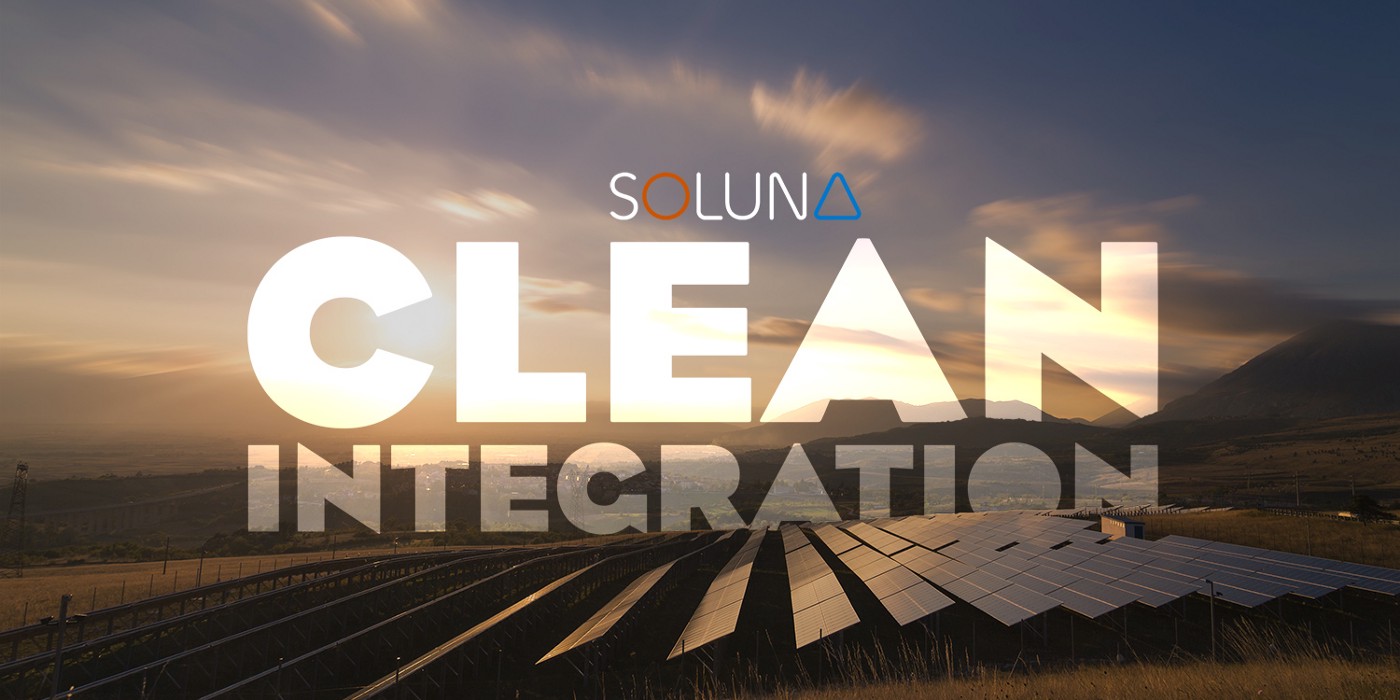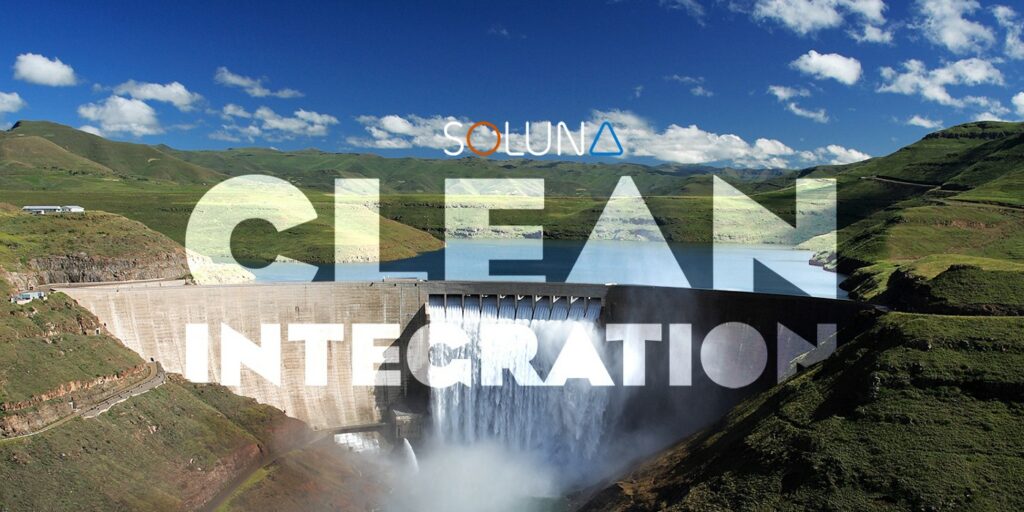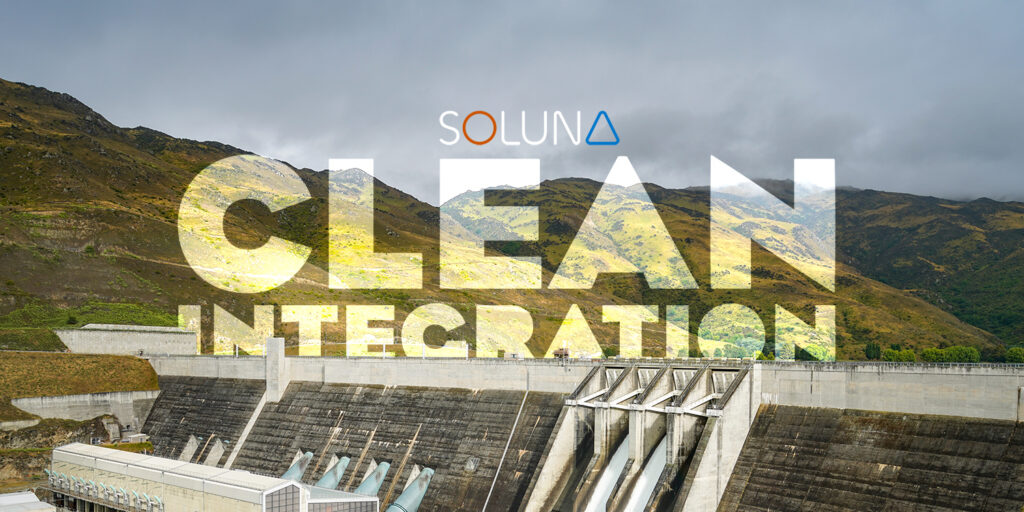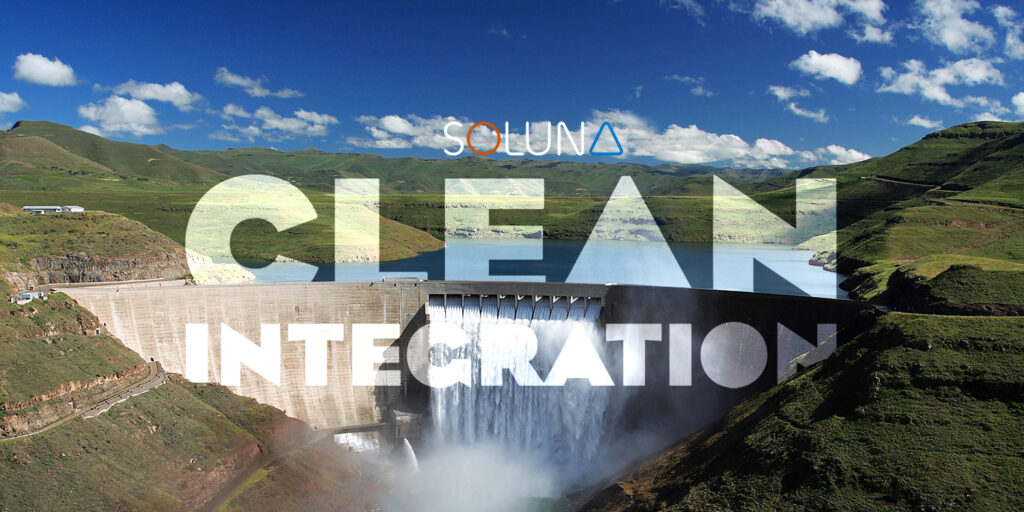Listen now on Apple | Spotify | SimpleCast
In February 2021, Texas experienced a once-in-a-century storm that caused a massive electric generation failure across the state.
An extreme winter storm, probably the coldest in the last 50 years.
It’s been referred to as the great Texas freeze. The grid failure lasted over two weeks in some parts of the state and resulted in a loss of power for about four and a half million homes, an estimated death toll of over 700 people, and nearly $200 billion in damages.
Though, some energy companies actually did very well during the storm. But some went bust.
To put this all into perspective, Texas is roughly the size of France. It’s the second-largest state in the U.S. (Alaska is the largest), and it was later reported by the Electric Reliability Council of Texas (ERCOT) that the grid was only four minutes away from total collapse after this catastrophic storm.
Soluna Computing CEO John Belizaire sat down with author and journalist Chris Tomlinson to discuss the grid failure and what it means for the future of energy in Texas.
At the Houston Chronicle, Chris covers energy, state politics, and policy. He previously worked as a correspondent and investigative reporter for the Associated Press in Austin, and is the author of two books — Tomlinson Hill: The Remarkable Story of Two Families That Share the Tomlinson’s Name — One White, One Black, and Forget the Alamo — both a reckoning with racism in America.
With a thorough grounding in Texas history and politics, Chris has a unique understanding of Texas’s grid setup and the state’s energy politics.
(Since this conversation, Chris Tomlinson wrote “Crypto Could Raise Texas Electricity Prices If Not Planned Well” for The Houston Chronicle)
(This transcript has been edited and condensed for print.)
[2:41] You lived through the blackouts; being a local, what was the cause of the grid failures?
Chris Tomlinson: Well, I went 86 hours without power at my house and had 11 pipes burst, so before I cut the water off at the street, it was an ordeal. One that I don’t think any Texan’s going to forget anytime soon. The Texas grid is interesting because on the one hand, what I like to call the software side of it is pretty advanced. We have this wholesale electricity market where we only pay for energy that is consumed. We have a retail choice for most customers of electricity in Texas. So you get to pick what company you buy your electricity from, for your home or for your business. Then there’s the hardware side. It was the hardware that really let us down in this freeze.
And they were problems that we knew in advance. We had a freeze in 2011 that caused rolling blackouts around the country. The federal Energy Regulatory Commission made some recommendations, Texas ignored them and just let the grid become even more decrepit. So we have a storm, as you say, one of the worst in 50 years, the first time that the national weather service has issued a winter storm warning for all 250 counties in the state. We had this confluence of events with the natural gas wellheads because there’s a little bit of moisture that comes up with natural gas out of the ground and that moisture can freeze and clog up the pipes. If that natural gas doesn’t flow to the power plants, the power plants can’t spin. They go offline for lack of fuel. That causes a power outage at compressor stations for other natural gas pipelines, which causes that natural gas to go offline. No one really expected wind or solar to contribute that much in a winter storm. But it was made worse when those blades froze up and the wind turbines didn’t spin anymore. So at a time when we needed 69 gigawatts, we lost 52 gigawatts of power.
John Belizaire: Wow. It’s like a chain reaction. We do a lot of work with utilities and power plant owners. Talking to the renewable energy power plant owners during that time was fascinating because they gave us a play-by-play of what they were going through. Conversations with the utility were somewhat comical. We said, “Well what do you think the issue is?” And the utility said, “Well, we were ready. We have backup generators and everything ready to go. The only problem is they work on gas.”
So if the gas can’t get to those things, it really doesn’t work. What do you think is needed to turn that around? I think that because of the hardware failure, most people don’t really understand that chain reaction that took place.
[5:57] What do you think are the roadblocks to growth in alternative sources that could have replaced natural gas?
Chris Tomlinson: Well, you look around the entire spectrum of generation and you can see dumb mistakes on many levels. We lost one of the nuclear reactors at the South Texas plant because I clogged up the cooling water intake and that caused one of the reactors to go offline. Why does that happen? The gas industry hadn’t reported to the grid, to ERCOT, where their compressors were, where this critical infrastructure for delivering the gas to the electric power plants. ERCOT had no idea. They just cut off power where they needed to cut power and they could have left the power on for those compressors and maintained that flow of natural gas.
We also have no requirement to inspect these power plants or we didn’t have any way to inspect these power plants to make sure that they could operate in minus four-degree weather. So it was really this crazy free-market idea that the government has no business going in and inspecting that hardware to make sure that it works. To me, that was laid bare because the idea was that if you offer people the opportunity to make $9,000 a megawatt-hour, which is 150 times higher than the normal price, they would prepare. But that opportunity to make $9,000 a megawatt-hour was not enough to make a wind turbine operator install the heating strips on their blades to keep their blades from freezing up. You have to have some sort of government regulation to come in and say, “Prepare for winter.” You can’t just say, “Hey, if you actually work in the once in a 50-year storm, you’ll make a lot of money.” That’s not going to be enough for most people to make the extra investment to have weather-ready equipment.
John Belizaire: So if you look at the overall infrastructure, it was vulnerable to storms like this because you’re always vulnerable to things that you’ve never seen before, but it seems like there was certainly enough power available from different sources, but because of the nature of the weather event, it was really hard. It introduced new challenges to those sources, right? The freezing and the water pipes, and so forth. Then there was no way to sense whether that was happening from the good operator’s perspective. Is that a good way to characterize it?
[8:46] Was there a way to predict this grid failure?
Chris Tomlinson: I’m not convinced that we didn’t know. As I said, the 2011 freeze event was an early warning. That was the Canary saying, “Hey, here are your problems. You should fix them.” And state leaders did not want to levy those costs onto the generators. So they didn’t do it. They made no requirements. I’ve spoken to people in the industry who knew that we were going to lose a third of the grid on February 15th three days in advance. They could look at the numbers, look at the generation and see that yeah, we were going to have growing blackouts. There was no doubt about that. What we didn’t anticipate was how really shoddy the grid turned out to be, and right now, we rely on natural gas for peaking power. As long as we rely on that, we need to have a more functional, natural gas system.
John Belizaire: You’re talking about the concept of increasing the reliability and resiliency of the existing infrastructure, right? So natural gas, the piping, the ability to have more operator or government involvement in ensuring the reliability of those systems. You’ve also talked a bit about alternative solutions, especially ways to store energy when there’s abundance and that stored energy might be used as a solution. I think you’ve written about the promising potential of battery storage for renewables, but you noted in the piece that the technology is not quite ready to scale to meet global needs. Can you elaborate on this for our listeners and perhaps juxtapose it with these recent events?
[12:33] What do you think about Bitcoin mining as a grid stabilizer?
Chris Tomlinson: I’m frankly quite skeptical. ERCOT tells us that they expect demand to go up 8% next year in 2023. They attribute a lot of that to crypto mining or batchable computing. I know about your company and about Compute North; there are dozens of them and they all have slightly different business plans. Just from a basic economic principle, I’m not sure how increasing demand is going to help the planet when really what we should be trying to do is just require less electricity, generate less of it in the long run.
My wife used to be in the wind power business, so I know her company would have to feather the blades on their turbines at four o’clock in the morning because no one was awake to use the power. I know about the negative pricing, which by the way I see as taxpayer dollars going right back into taxpayer pockets; frankly, I don’t see anything wrong with negative pricing. Since taxpayers are paying for the tax credit, they should get the benefit, but with lower energy prices. Lastly, I’m skeptical because if Bitcoin is, say, $63,000 and you’ve got a good hash rate going, how is it economical to say, “I’m going to take the interruptible customer charge,” which will probably be a fraction of what you could get if you just stayed operating, generating the Bitcoin.
John Belizaire: That’s great. I appreciate you laying out those points because they’re very insightful. As you might imagine, we spent lots of time talking about the theory behind our business model and why we believe it will catalyze renewables. If I can offer a few perspectives. Number one, when we looked at the space, we didn’t look at it from a Bitcoin miner’s perspective. Initially, we were developers ourselves. We started out in Southern Morocco trying to figure out a way to monetize stranded power, essentially. You have a resource, it’s hard to monetize it and bring the energy to that local market because the economy isn’t at the level that it needs to be. It’s very expensive to build out a resource and deliver that resource over a long duration and return capital to investors when you’re only going to sell a portion of it.
So, having experienced that, where we had to wait for the grid to arrive, we then designed a plant that had its own embedded computer demand response capability. That computing was initially the primary off-taker off-grid, and then when the grid arrived, we integrated the combined unit into the grid in our design. What we realized was that the computing facility became almost like a giant battery, absorbing the spikes in the generation system and converting that to monetization that can then flow back to enhance the returns of the power plant investment. Then, as the economy of the local area expands, we can change that balance, sending more power to the grid. It ended up being a catalytic technological opportunity to expand renewable energy generation in areas where it can tend to be quite difficult.
When we figured that out, we started asking ourselves: where else does this problem exist? Is excess energy a big issue? And we spent about six months, give or take, talking to power plant owners, grid operators, scheduling companies, and they were jumping up and down. In fact, one gentleman took over our Zoom and showed us what effectively was a duck curve for assets that he was managing in California and parts of Texas. He explained that it’s a big economic issue for investors and renewables and owners of assets because of the grid’s inflexibility. It makes it harder for them to build plants because of the concerns about the eventual degradation in their revenue and curtailment of the site. The solution that we presented to them was essentially bringing load to generation; and not just load but a flexible load that can actually ramp up and ramp down, primarily focusing on the consumption of that curtailment.
What we’ve done as a company is essentially productized it as something that we can then add to grid systems. We’re behind the meter, so the grid sees it as a combined resource. What’s interesting about that is when there are situations like the Texas freeze, because we’re designed from the ground up to be this flexible fluid construct, even in light of the economics of Bitcoin, we actually design all of our facilities to only be up about 85%. So that is already inherent in the design of our facilities. So when there is an opportunity to ramp down or we see grid signals that are showing we should be ramping down, we’re happy to do that because that’s the whole purpose of us being there. Then we’re turning around and selling that resource on a global basis.
So it’s a fluid cloud. So it’s not just the Texas location. It’s locations all over the world that will mesh together into a cloud to deliver really low-cost green computing to the world. It’s a lot easier for us to make that economic flip. The way to think about us is we’re a new type of resource that’s being added to the grid, much like batteries or transmission, for example, to address the issue of excess production that makes it difficult for increasing the green energy mixture. Does that make sense?
Chris Tomlinson: I think it makes perfect sense if I own a generation asset, but when you’re talking about a wholesale electricity market soaking up some of the excess energy, don’t you expect that to drive up prices, if just a little bit? Because you are competing with the grid to take some of that power off. So it would only make sense that there would be a rise in prices.
John Belizaire: So, we have done modeling because we very often are in nodes where the power plant has an offtaker that’s a utility, and they want to model its effect on their cost, et cetera. In our modeling, we’ve actually seen more benefits than bad things happening. I forget what the model is called, the U-plan model, I think it is that model for the entire grid. We’ve been through a couple of those cycles and we might see slight increases in the nodal LMP, but it’s not to a point where it significantly changes the dynamic of the wholesale market.
But the congestion degradation or decrease that happens in that area has a significant positive effect on the ability of certain power plants to get electrons on the grid that changes the grid mixture and assists the grid in dispatching down or dispatching up certain facilities. That’s been our experience so far as we take the approach that we’re taking. I do see other players in the space do things differently. They are really looking for places to plug into the grid at low cost and then provide the ancillary services and et cetera. We feel that we can enjoy that too, but we’re really focused on this congestion issue, which makes it really difficult for adding more renewables to the grid. That’s really the focus that we have at least as a company.
Chris Tomlinson: You’re talking about an 85% operational uptime. Is it really 85% of the time that ERCOT has more energy than it needs? Is that your number and do you like tapping into that reserve margin?
John Belizaire: So the model that we have is we combine with the facility so we’re able to use energy from the curtailed energy, energy of the plant itself. From an economic perspective, they’re indifferent. Sometimes we’re drawing from the grid if the power plant is smaller than us, for example. The weighted average across all of those sources gives us that minimum uptime. On average, we’re seeing about 90% up. That’s why I’m saying we don’t see as much of a significant effect on the pricing as on the congestion reduction, because we’re able to balance the load requirements at that location.
And if we have facilities in different parts of the grid, it actually creates a better dynamic experience for the grid. So 85% is not so much the percentage of time that there is curtailed energy. It’s more about the combination of the load being there to absorb the wasted energy, and the effect of the combined units on the flexibility of the grid because you have this ability to ramp up and ramp down. You can ramp the power plant a bit more because it’s got this essentially battery-like experience in the back there. Does that make sense?
Chris Tomlinson: It does. What is the market size for this kind of computing?
John Belizaire: We quantify on a global basis just the different types of computing because we look at Bitcoin and AI, machine learning, natural language processing, video transcoding, there’s a whole class of applications that act the way Bitcoin computing does where you can pause the computing.
And because it’s pausable, you don’t have to build a giant monolithic facility that has to be on 24/7, has high levels of redundancy, and has a giant diesel generator in the back to make sure it stays on. You can actually build a purpose-built facility that’s much more lightweight, that’s Lego block-like. That allows you to place it strategically in parts of the grid where that congestion is an issue, rather than tying into these big monolithic footprints. So in terms of size, well, curtailment is a pretty major issue. I can’t quantify it for you in terms of revenue or dollars, but in terms of energy volume, it seems to be a pretty significant portion globally. We estimate it’s about 6.7 or 7 billion wasted or missed revenue opportunities for the renewable energy industry on an annual basis right now.
Recovering that will increase the amount of capital that comes into the industry. More projects will be built. So you get a better mixture. In fact, we’ve talked to very large global power plant owners who told us they had a list. They had a list of sites that they will not invest in, or haven’t been able to invest in because of this issue. They went back and remodeled those sites with our solution embedded in them. There were a number of them that turned green. That said, this actually pencils out now. What excites me about that anecdotal insight that they shared with us was that if you look at that on a global basis, let’s say not just ERCOT, there are lots of places in the world that need more energy.
If you look at the African continent, they’re grossly under-energized, and you could unlock projects that normally wouldn’t be built. If you look at the US, where lots of states are flipping to very high percentages in RPS, then there are lots of challenges that are yet to be dealt with when you get to those levels of conversion. This is a solution, not the solution, but it’s a solution that can help to get there. That’s what gets me jumping out of bed every day to kind of go work on what Soluna does.
Chris Tomlinson: I think it’s exciting. It’s just interesting to me, that ERCOT’s one of the few ISOs that actually has grown in demand. And you go into other parts of the country and demand is flat.
But it’s also ERCOT’s Wild Wild West open wholesale market that makes this attractive. That’s why everybody wants ERCOT assets, right?
John Belizaire: Yeah, that’s right. We have looked at different ISOs around the country and so forth and some of the law frameworks that they have are limiting with regard to innovation. The advantage of the Texas market is that it’s because of the open market, it welcomes innovation that could be good or bad to the way we started the conversation. But with anything that’s new, you need a crucible to start and mature it. I want to shift to where we’re headed.
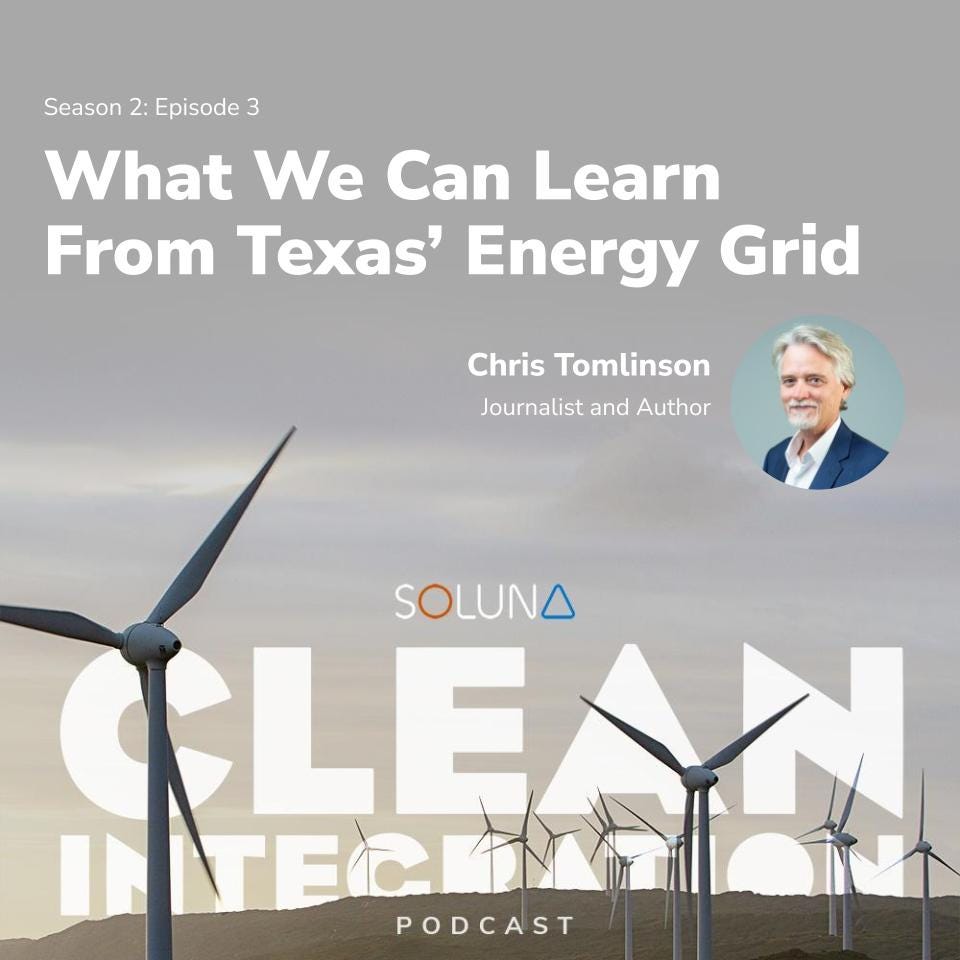
[34:07] Why do you choose to write about very controversial counter-narrative topics?
Chris Tomlinson: Well, the first 15 years of my career, I was basically a war correspondent. I covered nine wars over 14 years, mostly in Africa, but also in the Middle East. I was in Iraq and Afghanistan as well with US troops, but it was covering the end of Apartheid in South Africa and covering post-genocide Rwanda, where I was watching these people who’d had these horrible ethnically centered conflicts face their past and confront their history as a way of trying to move forward together. I realized we’ve never done that in the United States. We’ve never had a true accounting. So my first book Tomlinson Hill was me looking at my family’s slaveholding history and tracking down the descendants of the people that my ancestors enslaved. To tell the story of what it means to be white or black in America, through my family experience from the 1840s to the present day.
And some people will know about my cousin, who was a running back for the San Diego Chargers and one of the best running backs in the NFL. Forget the Alamo was my second phase of that journey, where I examined with my co-authors Jason Stanford and Bryan Burrough, the origin myth of Texas, and explained that the battle for Liberty at the Alamo was not about overthrowing the dictator, Santa Anna. It was about preserving the liberty to own slaves.
The Mexican government wanted to ban slavery, and they’d been trying to do it for 12 years. That was the fundamental conflict between the Anglo settlers in Texas and the central government in Mexico City. That’s something we don’t learn in school. So the first third of the book makes the case for why that’s true. The second third talks about why white people created all these myths and kind of covered up the role of slavery in the Texas revolution. Then the last third looks at how today, serious scholars are confronting the truth, exposing the truth, but our politicians and our mythmakers don’t want to face up to it.
John Belizaire: Fascinating. I didn’t know that about your background. That’s amazing. It certainly has probably given you an incredible perspective on history and really opened your eyes to how powerful narratives can be and mythology to some extent can be and setting the stage for how things move in the future. So do you have any advice for folks who are working against that sort of established position to some extent we are, right? We’re working on a narrative shift around crypto renewables, the intersection of the two, but there are probably lots of other folks out there looking to do things like that in different sectors. What’s your advice? What have you learned doing this?
[37:40] What’s your advice to those working on a narrative shift in this space?
Chris Tomlinson: Well, the stories that we tell ourselves and how we explain our stories to others is everything. It’s what makes us human. The true currency between humans is we share our stories and we understand each other based on those stories. It’s really important that we include everyone’s stories in our overarching narratives. So whether it’s the story of William B. Travis’ slave, who was at the Alamo and was one of the few American survivors, whether it’s the story of the black side of my family and how my Ku Klux Klan ancestors terrorize them, or whether it’s the story of renewables and that all energy comes from the sun, even oil comes from, originally, from photons.
So let’s skip the intermediary steps of growing plants and letting them sit for billions of years underground and make oil. Let’s just take the energy straight from the sun. There are all kinds of ways we can tell these stories and if we want people to join us on a journey, if we want to have unity, if we want to have understanding, we have to include everyone’s stories and keep it going. I would also say, “Hey, tell the story of that natural gas operator, who is the company that we’re going to rely on when it’s below zero and when it gets above 110.” We probably will, for the rest of our lives, depend on that guy. So let’s include him in the story too.
